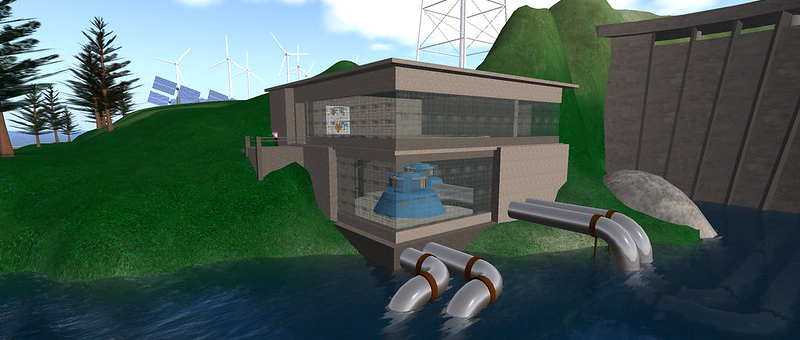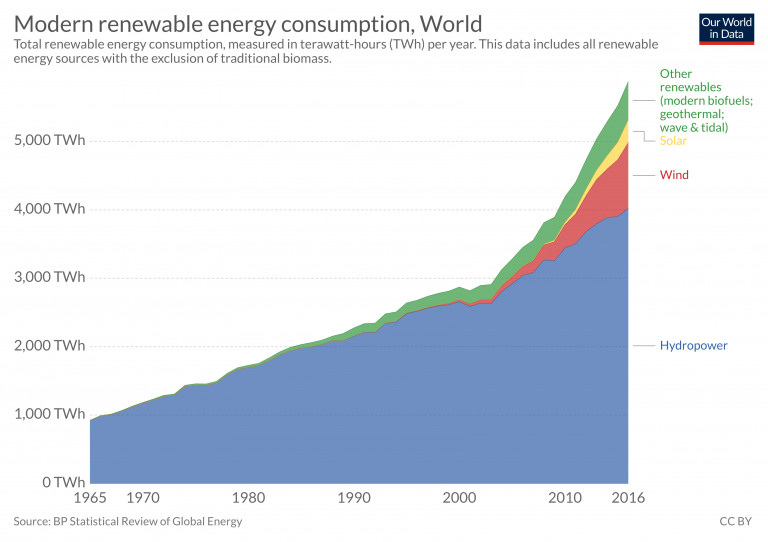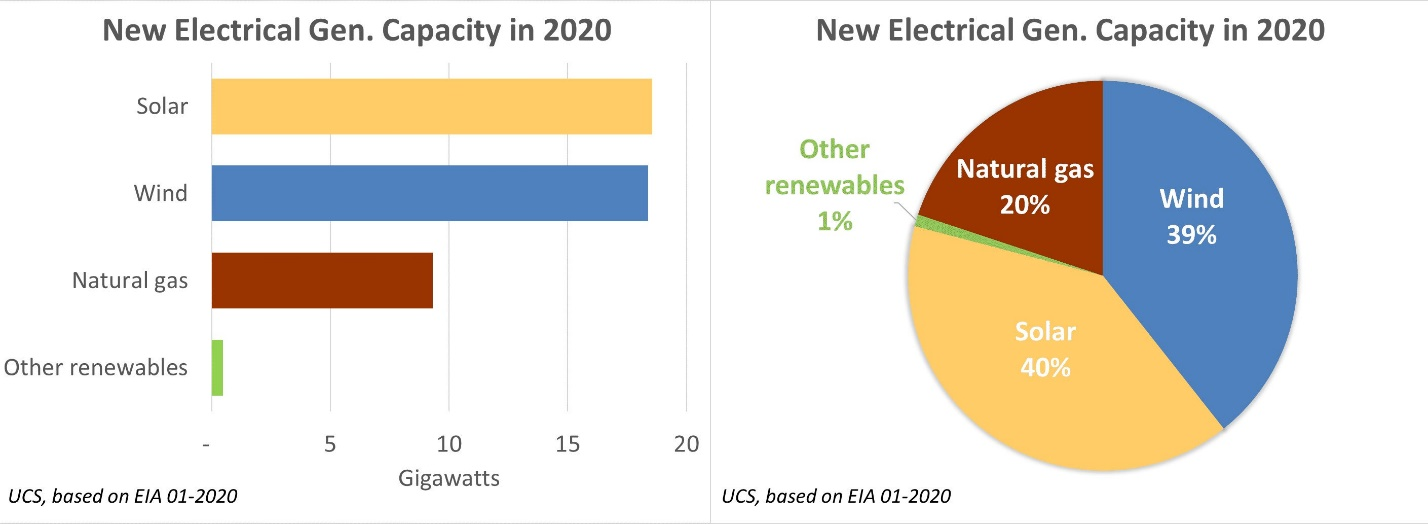
Hydroelectricity is Losing its Status as the King of Renewable Energy
Hydroelectricity has long been the dominant renewable energy source in the world. In total, 1,292 gigawatts of capacity have been installed in the world, an amount larger than the total generating capacity of the United States. The Brookings Institute reports that 35 countries in the world receive more than 50% of their electricity from hydropower. The chart below shows that hydroelectricity represented approximately 75% of global renewable energy.

In recent years, solar and wind energy has become more affordable, so much so that almost all new proposed renewable generation is solar or wind. The second chart shows that solar and wind represent 79% of proposed generation in the United States in 2020. Other renewable energy such as hydro, biofuel, wave and tidal, and geothermal represent less than 1%.

So how did hydroelectricity lose its status as the king of renewable energy? And, more importantly, does hydroelctricity still have a role to play in a rapidly changing generation environment?
The Case for Hydroelectricity
- Large generation plants are capital intensive but the investment has already been made. Hydro power plants are expensive to build. The U.S. Energy Information Administration in 2016 estimated that Hydro costs $5,312 per kilowatt, more than double the cost of solar and five times that of natural gas. However, once built, operating costs are low. The average hydro power plant production expense is half that of a nuclear power plant and only 25% of that of a natural gas turbine. It would not make sense to shut down hydro generators, at least not for economic reasons. Existing plants will continue to provide inexpensive power for many more decades.
- Smaller hydro projects may still make sense. In recent years, engineers have begun to look at adding turbines to existing dam structures that do not generate electricity. These include dams built to create lakes for recreation or flood control. These turbines would be smaller in scale than those used in previous hydroelectric projects. The costs of the project would be more economical since the dams would have already been built. They will also be less disruptive to the environment than projects involving new dam construction. Giulio Boccaletti, who runs the water program at the Nature Conservancy, expects the world to double its hydropower capacity over the next twenty years.
- It is important to maintain a diversified generation portfolio. Generations plants are expensive and meant to last for decades. The economics of plants can change dramatically over the life of a plant. Currently economics favor wind and solar. However, these economics can change. Technological changes could, in theory, make hydroelectricity more efficient in the future. Therefore, maintaining a hydroelectric presence is important.
- Hydroelectricity compliments other renewable fuels. Hydroelectricity has one large advantage over other renewable fuels. It provides a steady stream of power regardless of day-to-day changes in weather conditions. Solar power requires sunshine and wind power requires wind. Those conditions may not match up with times of peak power demand. Hydropower runs steadily night or day, in good weather or bad. It can provide a steady based of power until advances are made to allow power to be stored. In fact, plants can even control the amount of power generated by regulating the flow of water through the system
The Case Against Hydroelectricity
- Hydroelectricity disrupts animal migration patterns. Dams interfere with animal migration patterns. Expensive fish ladders can only partially mitigate the interference of fish migration patterns. In addition, dams create reservoirs of water that are more stagnant than normal river water. As a result, the reservoir will have higher amounts of sediment and nutrients that cultivate algae and crowd out other river animal and plant-life.
- Hydroelectricity disrupts water oxygen levels. Studies have shown that dams can deprive water of oxygen levels that leave oxygen-free dead zones that can’t support fish and plant life deeper than a few feet below the surface. New turbines are being built to address oxygen levels in water but would be expensive to replace.
- Risk of damage and flooding. Dams are frequently located upstream from major population centers. Although the risk of failure is low, there have been almost 50 incidents of major dam failure since the modern era of hydropower.
- Hydropower depends on seasonal weather conditions. Although immune from daily weather patterns, hydroelectric power is somewhat dependent upon rainfall and snow buildup. Electric pricing in the Northwest can fluctuate from year to year depending on the winter’s snowpack making it difficult for manufacturing companies to make investment decisions.
Conclusions
Existing hydroelectric power plants will continue to run and provide reliable, cheap electricity for the foreseeable future. New large hydro projects are unlikely to be built in the United States due to environmental and economic reasons. Eventually, hydro’s reign as the king of renewable fuels may come to an end.
Don’t Miss This Free Event Today, September 23rd:
|
Virtual Road Show Series – Wednesday September 23 1:00PM EDT Join Energy Fuels CEO & President, Mark Chalmers for this exclusive corporate presentation, followed by a Q & A session moderated by Mark Reichman, Noble’s Senior Research Analyst, featuring questions taken from the audience. Registration is free, but attendance is limited to 100. |
Sources:
https://www.ge.com/news/reports/breath-of-life-these-water-turbines-help-revive-dead-zones-in-rivers, Brendan Coffey, October 16, 2019
https://www.ucsusa.org/resources/environmental-impacts-hydroelectric-power, Union of Concerned Scientists, March 5, 2013
https://time.com/3978215/hydropower-us-growth/, Justin Worland, Time, July 31, 2015
http://zebu.uoregon.edu/1998/ph162/l14.html,
https://www.brookings.edu/blog/future-development/2019/05/01/managing-financial-risks-from-hydropower/, Luciano Canale, Gazmend Daci, Hilda Shijaku, and Christoph Ungerer, Brooking Institute, MaY 1, 2009
http://www.wvic.com/Content/Facts_About_Hydropower.cfm, Wisconsin Valley Improvement Company
